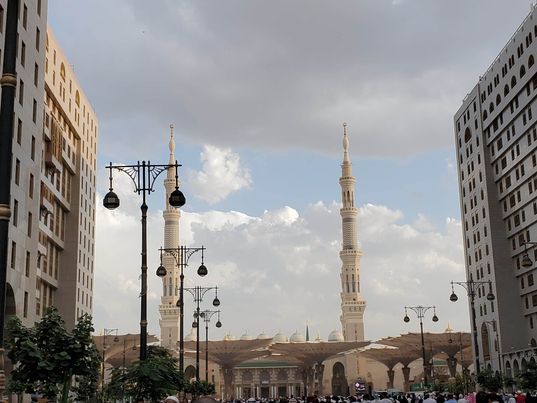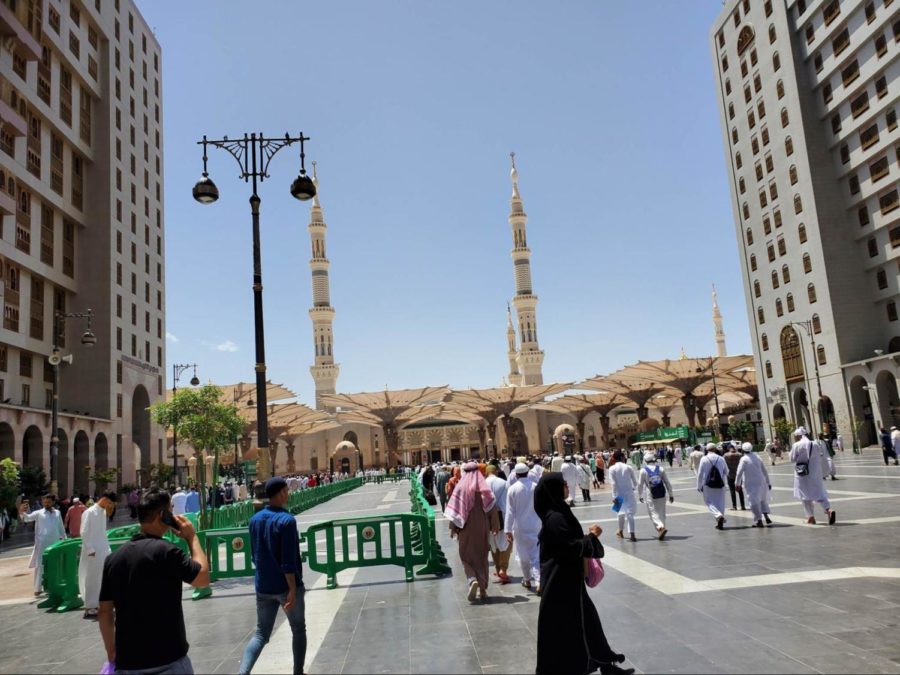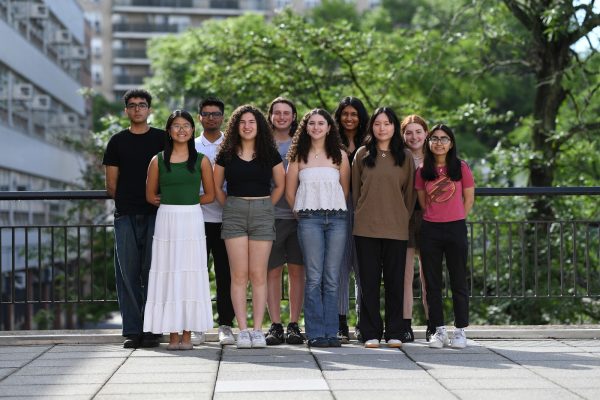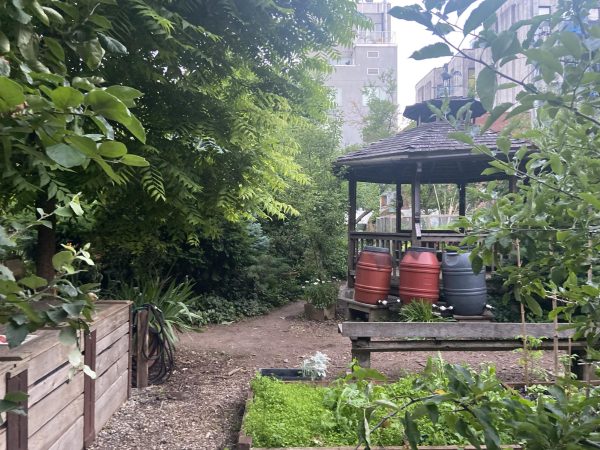The Two Holiest Sites For Muslims: A Profile on the Sacred Mosques in Makkah and Madinah
During the latter half of the blessed Month of Ramadan, I had the privilege of being in the two holiest cities of Islam. From feeling the benefits in spirituality that the sites foster to witnessing several aspects of Saudi culture, I recommend people to visit Makkah and or Madinah for a life-changing experience.

Masjid An-Nabawi is the second holiest mosque in Islam only behind the Grand Mosque in Makkah. Located in the Holy city of Madinah where Prophet Muhammad (Peace Be Upon Him) and his Muslim followers emigrated after their prolonged persecution in Makkah, Masjid An-Nabawi contains the house and tomb of Prophet Muhammad.
Everyone was to have at least one item of food. In the rare instances of someone not having any food, the people in proximity relinquished some of their dates, water from the well of ZamZam, and possibly even a fat-free yogurt with a packet of cumin seasoning included that was intended to be dipped with a quintessential loaf of bread, to the one in need.
As such, everyone was guaranteed to have something to eat. This almost always happened before the layers of plastic arrived, which is when the people begin to sort themselves into unilateral rows, looking to place their items of food on the carpet recently covered with the plastic. Some of the rows were bi-directional and had people facing one another. For such rows, space was delegated on a case-by-case basis with priority given to elderly individuals.
Even though the quantity of food varied person to person, the meals of each person did not stray drastically from the archetype that consisted of a couple of dates, a few cups or bottles of ZamZam water, and the primary aspect of the meal that was the combination of the yogurt, which could be adorned with a packet of seasonings the most prominent of which was cumin, along with a piece of bread — the meals at Masjid An-Nabawi in Madinah, Saudi Arabia which means the “Mosque of the Prophet Muhammad” Peace Be Upon Him (PBUH), that constituted the breaking of the fast for millions of people.
Shortly following the placement of the layers of plastic, the rows of people, having been filled to their absolute limits, were finalized in their composition as everyone waited for one thing: the voice of the muezzin (the individual in charge of delivering the calls to obligatory prayers for Muslims) that will proclaim the azan (call to prayer). While waiting, some take pictures, talk amongst themselves, read some verses of the Quran (Islamic Holy Scripture), or even simply observe the busy atmosphere about them.
However, the vast majority of people, until the pronouncement of the azan, supplicate their Lord, imploring for good health, prosperity, knowledge, and expressing their gratitude for being able to break their fast in one of the holiest sites in Islam.
Seven to nine minutes — the amount of time (which begins after the azan) delegated for everyone to complete their first meal after having fasted for over 15 hours — after which the muezzin of the masjid (“mosque”) took another deep breath into his microphone and delivered a shortened version of the azan. This time, it is known as the iqamah, and it is proclaimed in order to indicate the readiness of the imam (the individual that leads the prayer for all others to follow) to begin the prayer.
Thus were the proceedings in Masjid An-Nabawi near the time of the setting of the sun during the Islamic Holy Month of Ramadan. Fortunately, I had the opportunity to spend half of my Ramadan in Saudi Arabia at Masjid An-Nabawi in Madinah (sometimes written as “Medina,” “Medinah,” “Madina,” or even “Madni”) as well as at Masjid Al-Haram (“The Sacred Mosque” or even sometimes referred to as “The Grand Mosque”) in Makkah (alternatively written as “Mecca,” “Meccah,” “Mekka,” and “Makka”).
Makkah and Madinah are the holiest cities in Islam: Makkah is the city in which the Holy Kaaba is located while Madinah is the city where Prophet Muhammad Peace Be Upon Him (PBUH) after his Hijra, “emigration,” due to the persecution of Muslims in Makkah (as a sign of respect and admiration, it is customary for Muslims to pay homage to the beloved Prophet Muhammad by wishing peace upon him with the use of ‘Peace Be Upon Him’ following his name/mention and the abbreviation of PBUH).
The month of Ramadan is the holiest for Muslims all over the world as they observe it through fasting from the time of Fajr (the prayer at dawn, just before sunrise) until Maghrib (prayer at dusk, just as the sun sets). Ramadan derives its divine status in the Islamic Calendar, which is lunar, as it is the Islamic month in which the Quran was revealed to Prophet Muhammad (PBUH) by the Angel Jibreel (“Gabriel”) from the speech of Allah (Almighty God). Therefore, spending this special occasion for all muslims in the two holiest cities of Islam — Makkah and Madinah — was undoubtedly a moving experience for those involved.
The Holy Month is split up into three ’ashra (groups of ten) as ten nights are in each ’ashra: the first ten nights are in the ’ashra of rahma (Mercy of Allah), followed by the middle ten nights that are in the ’ashra of maghfirat (Forgiveness of Allah), and finally the last ten nights are in the ’ashra of najat (salvation). In the two holy cities, the schedule is tense as individuals strive to attain the various blessings of the Holy Month, especially within the last ten nights of the final ’ashra.
A typical day during Ramadan starts during midnight (a few minutes before 4 a.m.) prior to dawn in order to eat Suhoor, or even called Sehri (the final meal before sunrise that indicates the beginning of the fasting period). The masjids of Makkah and Madinah do not provide this meal, but the vast majority of people eat the same that they do when they break their fast: the aforementioned archetype that is a few dates, a yogurt cup with a piece of bread, and cool ZamZam water.
No eating or drinking is permissible following the muezzin’s azan for the prayer of Fajr. A few minutes before the Fajr azan, it is always exciting to witness people drink as much water as they possibly can to ensure their hydration throughout the day. After having the Suhoor meal and concluding Fajr prayer, it is essential to get some sleep to prepare for the upcoming day laden with extensive worship and stringent timing.
The next of the five daily, obligatory prayers is Zuhr (the prayer at noon). Unlike the dawn prayer Fajr that involves the imam reciting some ayahs (verses) of the Holy Quran aloud in order to complete the prayer, Zuhr is a silent prayer. This means that instead of the imam vocalizing ayahs of the Holy Quran into the microphone and sound system of the masjids, they recite it silently to themselves during Zuhr.
“It makes sense that the first prayer at dawn [Fajr] is recited aloud so that people can remain awake and alert in their prayer since they may be drowsy from either waking up in the middle of the night or not sleeping until Fajr time. However, the following prayer [Zuhr] as well as the one after that [’Asr] are both silent, and I think that is because they are in the middle of the afternoon. During these silent prayers, the atmosphere feels more serene, which is a big contrast to all the loud noises that are present during the middle of a typical day,” said Faiyaz Islam ’24 when asked about his opinion regarding the reasoning as to why Zuhr is one of the prayers performed silently.
Several Muslim scholars concur with Faiyaz and claim that the wisdom behind the fact that the mid-day prayer that is Zuhr is a silent one is because the silence facilitates the creation of an atmosphere of tranquility all around the masjid — an atmosphere that has the effect of contributing to the remembrance of Allah. Due to the majority of the prayer being performed in silence except for the parts that glorify and exalt Allah (the imam pronounces these parts aloud such that the congregation can follow), the Muslims establishing the prayer have the opportunity to refresh and reflect as that can be a difficult and easy-to-forget task in the middle of the day.
Everyone becomes immersed in the prayer to the extent that the actions of the congregation are unified like a joint unit — each individual Muslim serves as a subunit, mimicking the imam all for the glorification of Allah. Standing in prayer amongst Muslims of different sizes, colors, and ages but for the same purpose was a surreal experience for which several tears were shed.
The timing immediately after Zuhr prayer was the height of the afternoon and the primetime of the day. Therefore, following the conclusion of Zuhr prayer, a small portion of people actually remained in the masjids to wait for the upcoming mandatory prayer. Most people tended to exit the masjids and go to nearby markets or their hotel rooms, but were sure not to go to restaurants or fast-food chains which were closed for the most part due to the lack of sales that would arise as a result of almost everyone refraining from food during the daytime.
After Zuhr prayer, finding and subsequently retaining a spot inside either of the masjids becomes a daunting task, involving several minutes of navigating through densely-packed rows of worshippers as most of them remained in their spots since Zuhr prayer. The third and middle of the five daily prayers is ’Asr (the afternoon prayer), which usually takes place three to four hours after Zuhr. Similar to Zuhr, ’Asr is the other silent prayer as only these two out of the five daily, mandatory prayers are performed silently.
Unlike the gap between the prayers of Zuhr and ’Asr, practically everyone remains in their attained spots after the conclusion of ’Asr prayer. This is because the following prayer is Maghrib (the prayer at dusk), when it is time to break the fast kept since Fajr. The time between ’Asr and the fourth daily prayer, Maghrib, is around three and a half hours, which is similar to the time between Zuhr and ’Asr.
In addition to marking when it is permissible to resume one’s eating and drinking, Maghrib prayer is also the first prayer read aloud following the two silent prayers of Zuhr and ’Asr. Although night time nears, the liveliness and volume of the two cities amplifies when the time period to perform Maghrib prayer is incumbent: lights thoroughly illuminate the Holy cities and restaurants begin setting up for their upcoming busy operations, but a great deal to worshippers remain in the masjids to save their spots for the next prayers, just like after ’Asr.
The last of the five mandated daily prayers is ’Isha (the prayer of late evening/night), which tends to be the longest prayer out of the other daily prayers that are Fajr, Zuhr, ’Asr, and Maghrib. Despite its time period being in the late evening or even during night-time, the prayer of ’Isha and its conclusion, which is the end of the five obligatory prayers for that given day, signal merely the half-way mark of the prayers and worship still to be conducted for that day.
In other words, in addition to being the last of the five daily prayers, ’Isha prayer during Ramadan also served as a direct transition to Salatul Taraweeh (prayer of rest and relaxation). Salatul Taraweeh is a greatly recommended, but ultimately non-obligatory prayer that one can pray only during Ramadan, making Salatul Taraweeh one of the biggest hallmarks of the Holy Month alongside fasting. The imams of Masjid An-Nabawi and Masjid Al-Haram conduct Salatul Taraweeh immediately following the completion of ’Isha prayer around 10:30 PM.
There is a downtime of nearly two hours following the conclusion of Salatul Taraweeh, which is the time at which the cities of Makkah and Madinah are most bustling — various lights continue to shine at every other meter, market promoters test the capabilities of their voices as they fervently call people to their stores, and there are different restaurants, vendors, or fast-food chains for everyone as the period of fasting for the day is over.
While Salatul Taraweeh is prayed each night throughout the entirety of Ramadan, another special type of prayer by the title of Qiyam-ul-Lail (literally translated from Arabic as “standing at night”) is only performed during the last ten nights of Ramadan, which is the final ’ashra that emphasizes the nights of salvation. Together, Salatul Taraweeh and Qiyam-ul-Lail constitute the routine nightly prayers that take place during the final ten nights of Ramadan.
These prayers are significant and the unique identifiers of the primetime of Ramadan because Salatul Taraweeh and Qiyam-ul-Lail, which are of similar lengths more or less, are both around five times the length of ’Isha and can both easily span to ninety minutes to two hours each. While Salatul Taraweeh is performed upon the conclusion of the ’Isha prayer, Qiyam-ul-Lail is typically prayed shortly after midnight begins, such sometime around 1:30 a.m., and can end as late as 3 a.m. (the time just before Suhoor) as per the title of the prayer that means “standing at night.”
By the time that the prayer of Qiyam-ul-Lail is completely finished, the time of Suhoor becomes imminent and people prepare for the upcoming day that will consist of similar activities. As such, a vast majority of Muslims, including myself, are inclined to sleep after the prayer of Fajr when it is dawn (around 5 a.m.). Then, it is important to wake up around 11 a.m. as that leaves sufficient time to prepare for the noon prayer of Zuhr: a schedule of 18 hours laden with religious activities and 6 hours of sleep, with 15 hours of fasting overlapping between these periods.
The Kingdom of Saudi Arabia, being the host nation of the two holiest cities in the religion of Islam, provides services for the millions of pilgrims and worshippers that visit the country for religious pursuits every year. Among these pursuits is definitely the Holy Month of Ramadan, but also Hajj (a pilgrimage mandated to be performed once during a Muslim’s lifetime granted proper circumstances) along with Umrah (a non-obligatory smaller pilgrimage).
In addition to being able to spend half of Ramadan in the two Holy cities, I also got to perform Umrah in Makkah. In the Quran, the Kaaba, which is a sacred building in the Grand Mosque of Makkah (Masjid Al-Haram), is described as the first house of worship. The Prophet Abraham built the Kaaba with the assistance of his son Ishmael, who was also a Prophet of God, and they dedicated the structure to the worship and remembrance of Almighty God; several peoples and generations after them made it a tradition to perform Tawaf (the act of circumambulation in which one must walk all the way around a sacred object) around the Kaaba. Tawaf is one tradition/aspect to be commonly practiced among others and these traditions are laden with spiritual significance. As such, Muslims uphold these traditions that emerged following the time of Prophet Abraham and his descendants with pilgrimages to Makkah, where the Kaaba is located.
“The entire trip [to Umrah] was such a valuable memory and I think back to different things often. I would say the most memorable moment was easily actually seeing the Kabba for the first time. My dad told me to close my eyes or look down and then look at the Kabba for the first time when I was close but I couldn’t wait and saw from the entrance. My family and I stood and just all started at the Kaaba for 10 minutes and that’s easily the most memorable moment because it still doesn’t feel real,” said Zainab Ahmad ’26.
While the larger pilgrimage of the two that is Hajj can only be performed during the season of Hajj in the Islamic Calendar, Umrah, the smaller pilgrimage, can be performed all other times of the year. As with most things, the first step to performing Umrah is to make the proper intention. The Prophet Muhammad (PBUH) is recorded as saying in an authentic and verifiable narration that half of a deed is constituted through its sincere/original intentions or motives behind it. Therefore, Muslims must enter Ihram (a state of consecration prior to Umrah or Hajj) in order to signify their sincere intentions of performing that pilgrimage for the sake of Allah and towards becoming more pious. The state of Ihram must be attained prior to crossing a station of Miqat (a barrier/boundary of varying distances around the Kaaba after which a pilgrim must be in Ihram to properly perform Umrah or Hajj).
Achieving a state of Ihram involves completing a prayer in a Miqat masjid, which is a mosque designated for completing the steps necessary to be in the Ihram state. In a Miqat masjid of which there are five, a pilgrim must perform a prayer and subsequently state a certain supplication that indicates the intention to perform pilgrimage. Additionally, it is possible for a person to perform Umrah, but not Hajj, on behalf of deceased individuals — an intention which must be pronounced in the supplication following the prayer in the Miqat masjid. Afterwards, Ihram is attained and the journey to Masjid Al-Haram, which is the Grand Mosque of Makkah in which the Kaaba is located, can commence.
The following step incumbent for a pilgrim upon their arrival in Makkah is the completion of Tawaf, or circumambulation about the Kaaba, for a total of seven times. This act of navigation around the Kaaba in a circular manner must be completed in the Mataf (an open region around the Kaaba that is purely designated for pilgrims). The beginning of a round of Tawaf is indicated by pointing to the Hajar Aswad (“the black stone”). Hajar Aswad is an important Islamic relic because it is narrated that the Angel Jibreel brought this stone from Heaven and gave it to Prophet Ibrahim when he ordered his son, Ishmael, to find some stones for the Kaaba. Some pilgrims, as a gesture of their devotion and gratification, attempt to kiss or touch the Hajar Aswad. However, this is certainly not a feasible task due to the sheer volume of individuals in the Mataf area. As such, Muslims point to the Hajar Aswad to signal the start of their rounds of circular navigation around the Kaaba.
“It’s a hard feeling to describe but actually being able to pray at such holy places gave such a peaceful feeling. It’s like a genuine feeling and comfort of being home but there was also a feeling of ‘oh I do not deserve this.’ Then, my mom told me that ‘no one comes to Allah’s house without his permission’ and that got rid of the somewhat uneasy feeling. The crowdedness is never low!” said Zainab when asked about her experience during Umrah. “I even got to touch the Kaaba at one point, which is so surreal to me I can’t believe I can say that.”
In the Mataf, there is also the Maqam Ibrahim (“the station of Abraham”), which is a small stone of square shape that served as a guiding marker for Prophet Abraham when he placed each stone of the Kaaba. Encased in a glass and metal enclosure, the square stone bears the footprints of Prophet Abraham because he stood on the stone in order to reach higher and place stones near the top of the Kaaba when forming its walls.
After performing Tawaf for seven consecutive rounds, pilgrims must then perform a small prayer in the direction of the Maqam Ibrahim. This step serves as a transition between seven rounds of circumambulation and seven rounds of Sa’i (translating to “pursuit” in Arabic). Sa’i, like Tawaf, is an integral part for Umrah as well as Hajj that must be completed for a proper pilgrimage. It is a ritual in which pilgrims pace between the two mounds/hills of Safa and Marwa for a total of seven times. Both of the mounds are within the Grand Mosque of Makkah itself and are near the Kaaba. Starting at Safa, pilgrims make a supplication and begin traveling towards mound Marwa, which is approximately a little over a quarter of a mile from mound Safa; Going to Marwa from Safa is counted as one round while returning to Safa from Marwa is counted as a second round. As such, pilgrims end up in mound Marwa after the seven rounds even though they started in mound Safa. While female pilgrims traverse the seven rounds of Sa’i by walking, male pilgrims are expected to run in the areas indicated with green lights.
Just as Tawaf is an upholding of traditions performed by the several generations that circumambulate the Kaaba, the ritual of Sa’i is a commemoration of the acts of Hagar, who was the second wife of Abraham. It is narrated that Abraham, acting on the orders of Almighty God, traveled to another city whilst leaving his family consisting of Hagar and Ishmael (an infant at that time) behind in the deserts of modern-day Makkah. Hagar, at the instance of Abraham leaving them in a valley of the desert, recognized that this was a trial from God. As such, Hagar did not question her husband’s actions.
Hajar sought refuge under the shade of a nearby tree, taking her provisions and infant child along with her. Shortly after when Hagar consumed the whole of her foods and drinks, she could not continue to readily breastfeed Ishmael. The infant, due to extreme thirst, began crying which led to Hagar, with the infant Ishmael in her hands and without her husband, to desperately run between the two mounds of Safa and Marwa in search of water and assistance. Sa’i, meaning “pursuit” is a befitting name to describe Hagar’s tenacity. It is this event, with all its emotions and significance, that millions of Muslims each year seek to profoundly re-enact during their pilgrimage.
Between each of these steps of Tawaf and Sa’i, it is customary to refresh oneself and replenish energy with water from the well of ZamZam. Now preserved in the Grand Mosque of Makkah, the well of ZamZam is the flow of a spring that gushes forth and is always flowing. Hagar is attributed with naming this blessed type of water. It is narrated that when the desperate Hagar frantically ran between the two mounds of Safa and Marwa seeking water for the infant Ishmael, Angel Jibreel appeared and started digging a hole in the sand. Underneath several layers of sand was this very spring — the spring of ZamZam. As Angel Jibreel was digging and the water gushed forth, Hagar called out “Zom! Zom!” (“Stop! Stop!”) in hopes that the spring will stop gushing forth its content as she feared it running out. However, the water of ZamZam that is considered the maximum nourishment kept running and is still running to this day.
Lastly, the final step of Umrah is the Halq wa taqseer (“shaving of the head and trimming”) — the haircut. While in the state of Ihram, it is forbidden for a person to cut or remove hair from any part of their body. Therefore, the mandatory haircut as the last step signifies the end of one’s state of Ihram and subsequently the conclusion of their Umrah. Male pilgrims are expected to fully shave their heads while female pilgrims must cut the length of a fingertip of hair.
In addition to explicitly representing the final stage of Umrah, the haircut is a highly revered and cherished part of the journey that many Muslims view as a form of spiritual rebirth. This step of letting go of one’s hair symbolizes humility, purity, and detachment from mere-worldly aspects — just as the hair falls from one’s head, their sins are said to fall onto the ground as well.
“My Umrah did bring me closer to Islam. I started reading the English translation of the Quran on my own time and minor things like that after I came back, although I have a lot farther to go. The way people treated each other at both places [Makkah and Madinah] was literally like one massive community. Everyone would be passing around dates to random people and giving them out. My sister and I did that at one point, too. Everyone was contributing to help strangers, no matter how big or small the act was. People would donate prayer mats, share prayer mats, give seats to elderly, and do such minor things like holding their hands above a random baby’s head to protect the kid from the sun during Umrah. The trip was quite short, but it was easily the best week of my life,” said Zainab.
The acts of pilgrimage to the holiest sites in the whole of Islam undoubtedly has a resonating effect on Muslims, leaving us with a profound and indelible reminder of our deeply-held faith, and the occasion of Ramadan amplifies this incomparable feeling that is an amalgamation of peace, fulfillment, unity, piety, and incredible spirituality. It is no wonder that an increasing number of Muslims visit the Kingdom of Saudi Arabia each year, and that visiting these cities at least once during a Muslim’s lifetime is a necessary pillar of the Islamic faith. They fill one with a newly-found appreciation, devotion, and connection to the Islamic deen (an Arabic word that is often simply translated as “religion” but has stronger affiliations to be translated as “way of life”) that cannot be found elsewhere. I hope that many more people get the opportunity to go and experience the unparalleled sights and significance present in the cities of Makkah and Madinah as we continually strive for peace, seek content in our everyday lives, and aim towards becoming the best versions of ourselves.
The month of Ramadan is the holiest for Muslims all over the world as they observe it through fasting from the time of Fajr (the prayer at dawn, just before sunrise) until Maghrib (prayer at dusk, just as the sun sets).
Shahabir Sami is an Editor-in-Chief for the 'The Science Survey.' As an Editor-in-Chief, Shahabir provides the third and final overall edit for his peers’...











